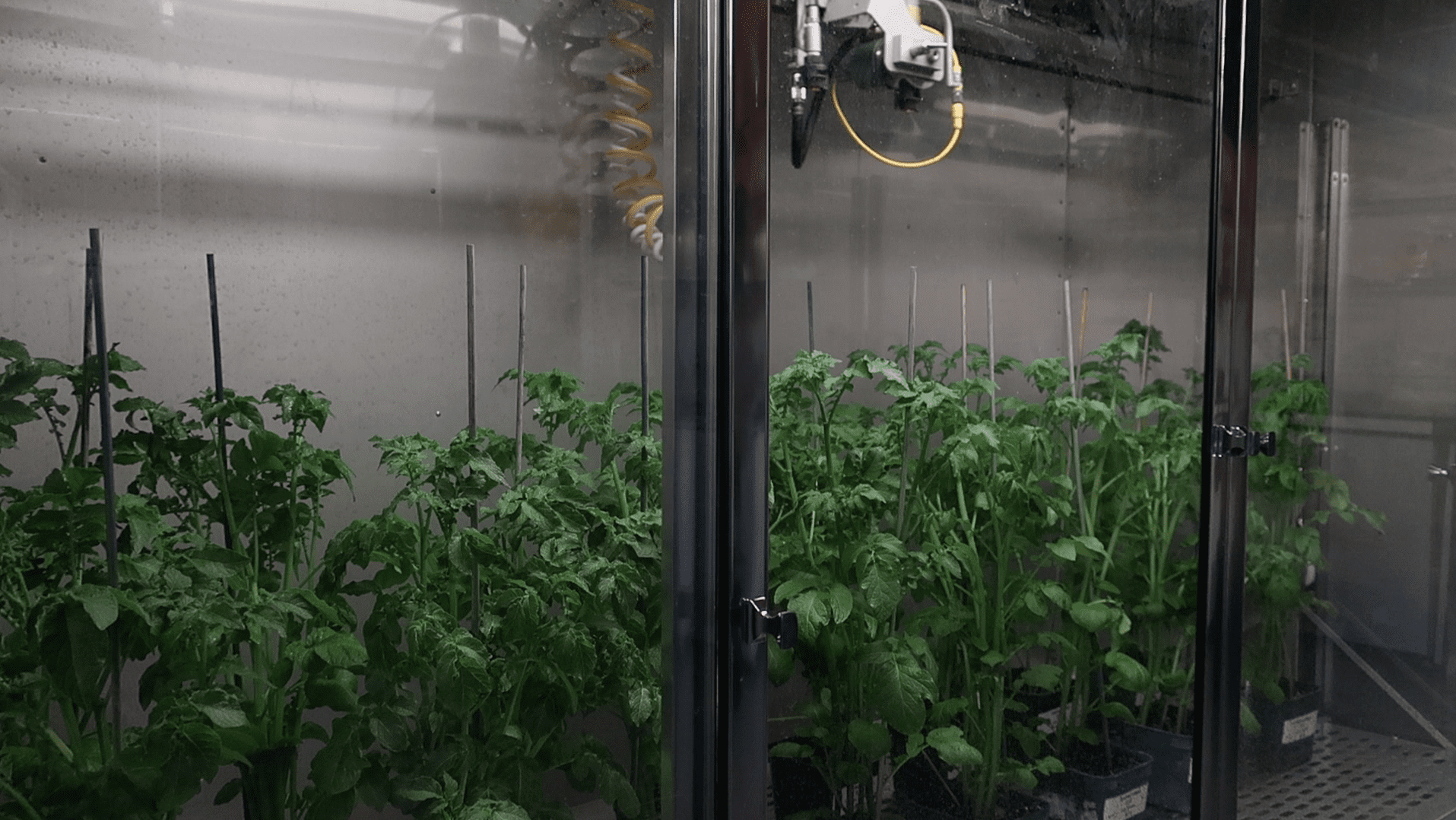
...the CHAP crop research track sprayer
CHAP has supported a crop research track sprayer at the James Hutton Institute (JHI), a leading innovator in the agriculture, environment, and land-use sectors, to help promote the innovation needed across the sector.
The world is in a period of dramatic change and no less so in the agriculture sector. Climate change continues to impact all walks of life and it is clear that, if we are to lessen the effects of this, we need to reduce our emissions, eliminate a reliance on fossil fuels and create decarbonised production systems.
Agriculture is a major source of GHG emissions globally, but there are many activities ongoing to both adapt to, and mitigate against, climate change. Invariably, these activities need strong elements of innovation and translation through to the target stakeholders, often with a requirement for technology for testing and scaling up through the technology readiness levels.
Professor Derek Stewart of JHI’s Advanced Plant Growth Centre says: “I firmly believe that using the crop research track sprayer can help to develop innovation and business growth, but that will only happen if potential users understand what it does and the range of protential uses.”
For that reason he outlines how this equipment – a DeVries Manufacturing Generation III Research Track Sprayer – has multiple uses and explains how it can be used in projects to develop new innovations in the agricultural sector.
1 Simulate the field application of pesticides
The crop research track sprayer simulates the field application of pesticides (insecticides/fungicides/herbicides). This is vital because pesticide efficacy testing needs to be carried out in rigorously controlled and reproducible conditions. This sprayer has been designed specifically for this application.
2 Trial nature-based solutions
The sprayer can also be used to trial nature-based solutions. In the same way as testing standard agrochemicals, efficacy testing is also needed for novel actives such as biopesticides. However, such solutions will need even greater care and application in terms of spray durability, bioactive-formulation interactions etc, so the crop research track sprayer, which has a high level of control, is ideal for use in such situations.
3 Test biostimulants
Chemical fertilisers have been a mainstay of traditional agriculture for many decades, but as farmers move towards more sustainable farming techniques, biostimulants, which do not have an adverse effect on the environment, are seen as a potential solution. Biostimulant production is therefore an emerging field of research, which aims to develop new (bio)chemistries and biological approaches to enhance crop nutrition efficiency, abiotic stress tolerance and/or crop quality traits. The crop research track sprayer is a valuable tool to test the efficacy of the products under development.
4 Study the effect of rainfall
Rain can have a strong influence on agrochemical durability. Farmers often have to delay spraying at a time that would be of optimum benefit for their crops as the prevailing weather conditions would cause loss of the solution sprayed, wasting money and potentially causing the chemicals to run-off into nearby watercourses, causing pollution. The optimum and sustainable use of bioactives and biostimulants can often depend on the durability of the treatment in terms of rain fall, and those qualities can also be observed using the crop research track sprayer in its very controlled environment.
5 Optimise irrigation
Using well defined soils (compaction, carbon content etc) with multiple different irrigation regimes, the crop research track sprayer can be used in a range of tests to deliver statistically relevant results in order to optimise irrigation. This may also be used for bioactive/formulation combinations in terms of degradation in soil and/or impact on the soil microbiome
In addition the examples above the system at JHI can also be used as a test bed for bioactive formulation testing and the trialling of more emerging and innovative approaches to plant enhancement, disease control, soil health such as nanotechnology-based treatments. JHI has a long history of developing and trialling emerging technologies that may challenge the status quo but having the sprayer in a regulated and well managed environment, users can be confident that the data produced will be robust and facilitate translation to impact.
For more on CHAP’s work in sustainable agriculture, go to Field Scale Precision Equipment.
If you have any questions about CHAP, our Membership Scheme, or are interested in working with us on a specific project, then please send us an email at enquiries@chap-solutions.co.uk










